-
 Bitcoin
Bitcoin $119000
-2.21% -
 Ethereum
Ethereum $4315
1.01% -
 XRP
XRP $3.151
-3.11% -
 Tether USDt
Tether USDt $0.0000
0.00% -
 BNB
BNB $808.5
-0.71% -
 Solana
Solana $175.8
-4.21% -
 USDC
USDC $0.9999
0.00% -
 Dogecoin
Dogecoin $0.2250
-3.92% -
 TRON
TRON $0.3469
1.77% -
 Cardano
Cardano $0.7818
-3.81% -
 Chainlink
Chainlink $21.47
-2.10% -
 Hyperliquid
Hyperliquid $43.30
-6.81% -
 Stellar
Stellar $0.4370
-2.84% -
 Sui
Sui $3.682
-4.40% -
 Bitcoin Cash
Bitcoin Cash $590.8
2.67% -
 Hedera
Hedera $0.2484
-5.20% -
 Ethena USDe
Ethena USDe $1.001
0.00% -
 Avalanche
Avalanche $23.10
-4.29% -
 Litecoin
Litecoin $119.2
-3.96% -
 Toncoin
Toncoin $3.409
0.90% -
 UNUS SED LEO
UNUS SED LEO $9.016
-1.29% -
 Shiba Inu
Shiba Inu $0.00001304
-3.82% -
 Uniswap
Uniswap $11.18
1.33% -
 Polkadot
Polkadot $3.913
-3.51% -
 Cronos
Cronos $0.1672
-3.08% -
 Dai
Dai $1.000
0.02% -
 Ethena
Ethena $0.7899
-4.70% -
 Bitget Token
Bitget Token $4.400
-1.23% -
 Pepe
Pepe $0.00001132
-5.93% -
 Monero
Monero $257.9
-6.44%
How do I check the contract address of a token in Atomic Wallet?
To find a token's contract address in Atomic Wallet, use the blockchain explorer for the token's network, like etherscan.io for Ethereum, and verify the address on official sources.
Mar 28, 2025 at 07:49 am
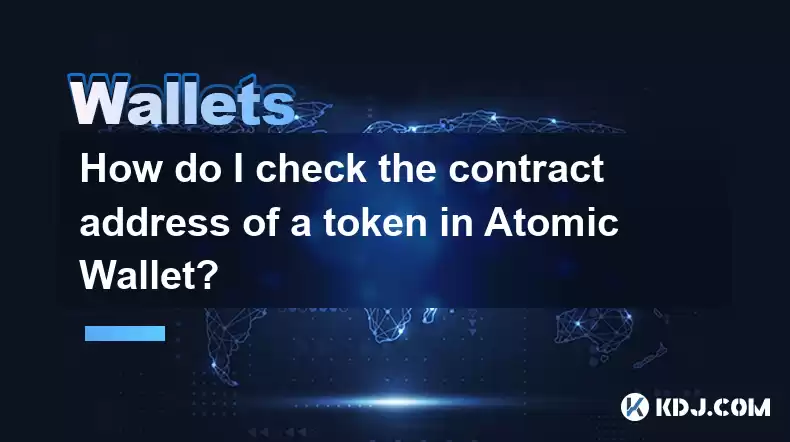
Locating Token Contract Addresses within Atomic Wallet
Atomic Wallet, a popular multi-currency wallet, doesn't directly display the contract address of a token within its main interface in the same way some other wallets might. This is because Atomic Wallet prioritizes user-friendliness, focusing on simplifying the user experience rather than displaying highly technical information unless absolutely necessary for a specific transaction. However, there are methods to obtain this crucial piece of information. Understanding how to find it is key to verifying token authenticity and ensuring you're interacting with the correct asset.
The primary method for obtaining a token's contract address in Atomic Wallet involves accessing the blockchain explorer directly. This is a necessary step because the contract address itself resides on the blockchain, not within the wallet's internal database. Different blockchains (Ethereum, Binance Smart Chain, etc.) have their own explorers.
Accessing Blockchain Explorers
First, you need to identify the blockchain your token resides on. This information is usually available on the token's official website or the exchange where you acquired it. Common blockchains include Ethereum (ETH), Binance Smart Chain (BSC), Polygon (MATIC), and many others. Once you know the blockchain, navigate to its corresponding explorer.
- For Ethereum: etherscan.io is the most widely used explorer.
- For Binance Smart Chain: bscscan.com is the primary explorer.
- For Polygon: polygonscan.com is the go-to resource.
Each explorer has a search bar. You'll use this to find the contract address. However, you'll need some identifying information about your token first.
Identifying Your Token
Before using the blockchain explorer, you need to identify your token. This typically involves knowing either the token's name (e.g., "Wrapped Bitcoin") or its ticker symbol (e.g., "WBTC"). This information is crucial for locating the correct contract address. Incorrect contract addresses can lead to irreversible loss of funds. Always double-check your information before proceeding.
Using the token name or symbol, search on the relevant blockchain explorer. The results should display information about the token, including its contract address. This address is usually a long string of alphanumeric characters.
Verifying the Contract Address
After obtaining the contract address from the blockchain explorer, it's vital to verify its legitimacy. This is a critical step to prevent scams and avoid interacting with fraudulent tokens.
- Cross-reference: Compare the address found on the explorer with the address listed on the token's official website or a reputable exchange. Any discrepancy should raise serious concerns.
- Community Verification: Check the token's official community channels (Telegram, Discord, etc.) for confirmation of the correct contract address. Scammers often circulate fake addresses to steal funds.
- Inspect the Token's Smart Contract (Advanced): For users with experience in smart contract auditing, reviewing the code on the blockchain explorer can provide additional security verification. However, this is a complex process requiring significant technical expertise.
Remember, the contract address is a unique identifier for a specific token on a particular blockchain. Without the correct address, you cannot interact with the token properly. Always prioritize safety and verification to protect your cryptocurrency investments.
Understanding the Importance of the Contract Address
The contract address is essentially the digital address of the token's smart contract on the blockchain. It's the key to interacting with the token. Without it, you cannot send, receive, or participate in any activities related to the token. It's analogous to a bank account number, uniquely identifying your assets. Using the wrong contract address can lead to irreversible loss of funds.
The contract address is crucial for verifying the authenticity of a token. Many fraudulent tokens mimic legitimate ones, hoping to trick users into sending their cryptocurrency to fake addresses. By verifying the contract address, you can significantly reduce the risk of falling victim to such scams.
Adding Custom Tokens in Atomic Wallet (If Necessary)
While Atomic Wallet supports a vast number of tokens automatically, you might need to add a custom token if it's not pre-listed. To do this, you'll need the token's contract address, ticker symbol, and decimal places (usually 18 for ERC-20 tokens). Atomic Wallet's interface provides a clear path for adding custom tokens, guiding you through the process step-by-step. Always ensure you're entering the correct information.
Frequently Asked Questions
Q: What happens if I use the wrong contract address?
A: Using the wrong contract address will likely result in the irreversible loss of your funds. The tokens will be sent to an address not associated with your intended token, making recovery extremely difficult, if not impossible.
Q: Where can I find the token's decimal places?
A: The token's decimal places are usually specified on the token's official website, the blockchain explorer, or the exchange listing the token.
Q: Why doesn't Atomic Wallet display the contract address directly?
A: Atomic Wallet prioritizes user-friendliness. Displaying the contract address directly might confuse users unfamiliar with blockchain technology. The wallet focuses on simplifying the user experience while providing access to necessary information through external resources like blockchain explorers.
Q: Is it safe to add custom tokens to Atomic Wallet?
A: Adding custom tokens is generally safe as long as you verify the contract address thoroughly. Always double-check the address against multiple sources before adding any custom token. Using unreliable sources can lead to security risks.
Q: What if I can't find the contract address for my token?
A: If you cannot find the contract address, it's best to avoid interacting with the token. The inability to locate the address may indicate that the token is not legitimate or is poorly documented. Contacting the token's support team or community might help, but exercise caution.
Disclaimer:info@kdj.com
The information provided is not trading advice. kdj.com does not assume any responsibility for any investments made based on the information provided in this article. Cryptocurrencies are highly volatile and it is highly recommended that you invest with caution after thorough research!
If you believe that the content used on this website infringes your copyright, please contact us immediately (info@kdj.com) and we will delete it promptly.
- Japan, Bitcoin, and Treasuries: A New Era of Corporate Finance?
- 2025-08-12 18:30:12
- Bitcoin Bull Market: Decoding the Indicators for the Next Big Move
- 2025-08-12 18:30:12
- Do Kwon's Terra Collapse: From 'Not Guilty' to Guilty Plea?
- 2025-08-12 18:50:12
- Material Efficiency, Traceability, and Trust: The New Pillars of Sustainability
- 2025-08-12 18:50:12
- PumpFun (PUMP) Price: Riding the Meme Coin Wave or Facing a Wipeout?
- 2025-08-12 16:50:12
- Uniswap's Legal Clarity Fuels Price Target: Will UNI Hit $12.85?
- 2025-08-12 17:30:13
Related knowledge
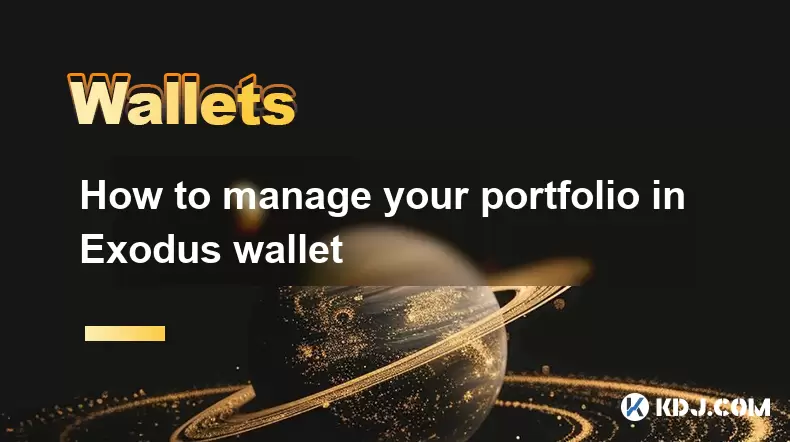
How to manage your portfolio in Exodus wallet
Aug 08,2025 at 10:07pm
Understanding the Exodus Wallet InterfaceThe Exodus wallet is a non-custodial cryptocurrency wallet that supports a wide range of digital assets. When...
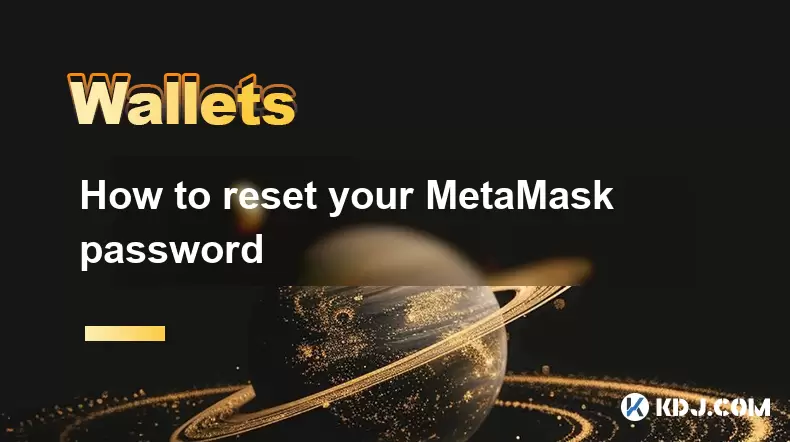
How to reset your MetaMask password
Aug 08,2025 at 01:28pm
Understanding the MetaMask Password Reset ProcessMany users confuse the MetaMask password with the seed phrase or private key, but they serve differen...
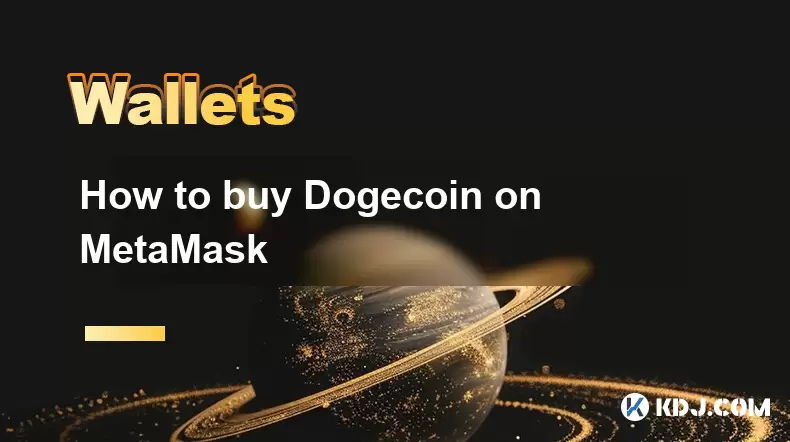
How to buy Dogecoin on MetaMask
Aug 08,2025 at 03:42am
Understanding Dogecoin and MetaMask CompatibilityDogecoin (DOGE) is a popular meme-based cryptocurrency that operates on its own blockchain, originall...
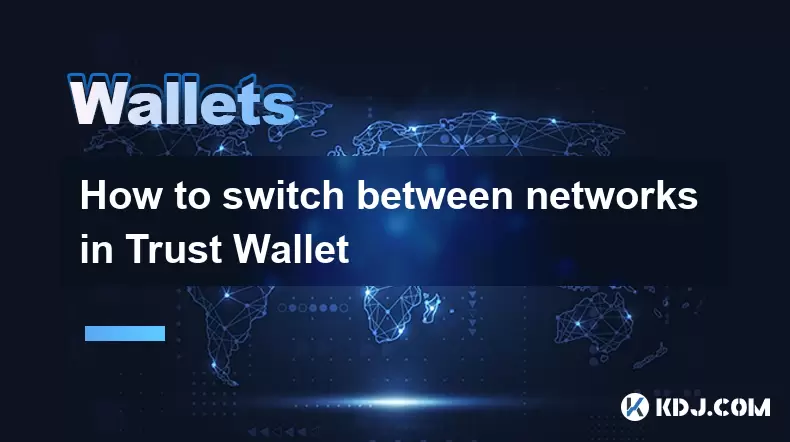
How to switch between networks in Trust Wallet
Aug 09,2025 at 11:07am
Understanding Network Switching in Trust WalletSwitching between networks in Trust Wallet allows users to manage assets across different blockchains, ...
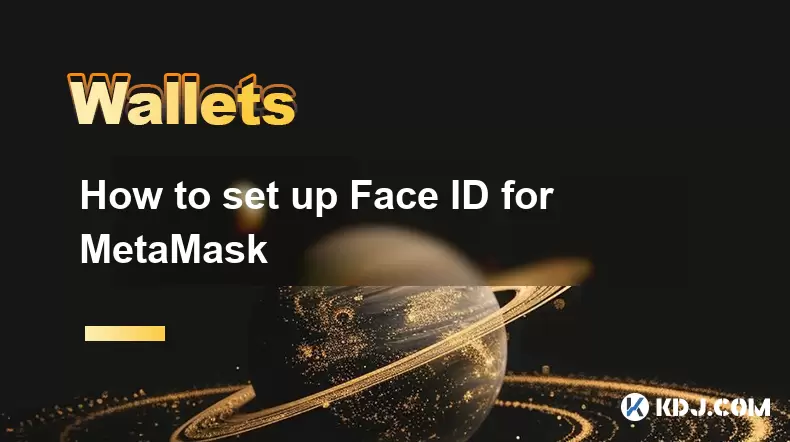
How to set up Face ID for MetaMask
Aug 12,2025 at 02:42am
Understanding Face ID and Its Role in MetaMask SecurityMetaMask is a widely used cryptocurrency wallet that allows users to interact with the Ethereum...
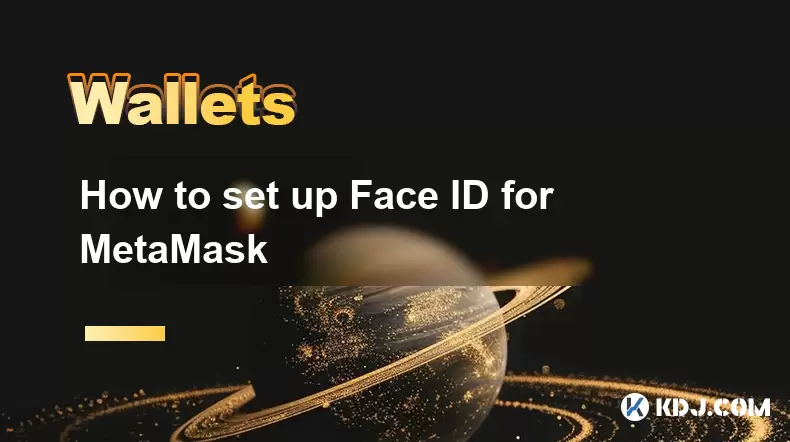
How to set up Face ID for MetaMask
Aug 11,2025 at 09:28am
Understanding Face ID and Its Role in MetaMask SecurityFace ID is a biometric authentication system developed by Apple that uses facial recognition to...

How to manage your portfolio in Exodus wallet
Aug 08,2025 at 10:07pm
Understanding the Exodus Wallet InterfaceThe Exodus wallet is a non-custodial cryptocurrency wallet that supports a wide range of digital assets. When...

How to reset your MetaMask password
Aug 08,2025 at 01:28pm
Understanding the MetaMask Password Reset ProcessMany users confuse the MetaMask password with the seed phrase or private key, but they serve differen...

How to buy Dogecoin on MetaMask
Aug 08,2025 at 03:42am
Understanding Dogecoin and MetaMask CompatibilityDogecoin (DOGE) is a popular meme-based cryptocurrency that operates on its own blockchain, originall...

How to switch between networks in Trust Wallet
Aug 09,2025 at 11:07am
Understanding Network Switching in Trust WalletSwitching between networks in Trust Wallet allows users to manage assets across different blockchains, ...

How to set up Face ID for MetaMask
Aug 12,2025 at 02:42am
Understanding Face ID and Its Role in MetaMask SecurityMetaMask is a widely used cryptocurrency wallet that allows users to interact with the Ethereum...

How to set up Face ID for MetaMask
Aug 11,2025 at 09:28am
Understanding Face ID and Its Role in MetaMask SecurityFace ID is a biometric authentication system developed by Apple that uses facial recognition to...
See all articles

























































































